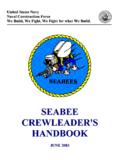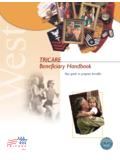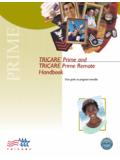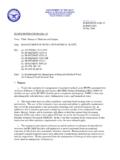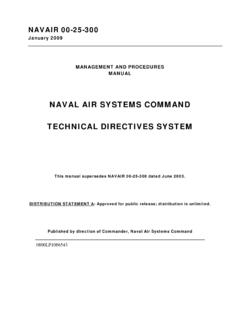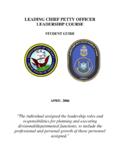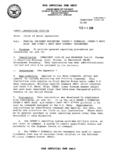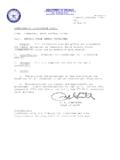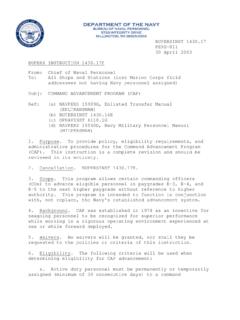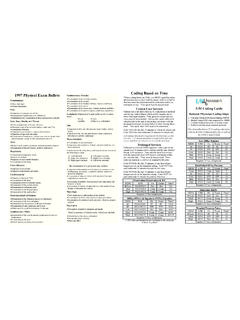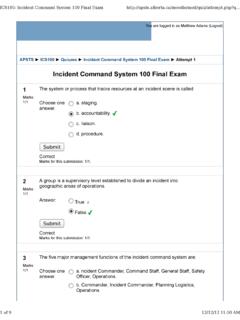Transcription of 12-1 - NAVY BMR
1 12-1. CHAPTER 12. AMMUNITION STORAGE AND HANDLING ASHORE. Ammunition storage ashore applies to the storage of explosives, ammunition, and ammunition components in two different types of environments and operational conditions. When ammunition is stored at permanently established storage locations, such as naval air stations, naval stations, or other Department of the Navy (DON). ammunition activities, extensive safety and procedural requirements exist. However, strategic operations may necessitate the establishment of ammunition storage facilities at advanced bases. Although governing regulations exist for the storage of ammunition at advanced bases, they are not as extensive as those governing permanent storage requirements and regulations. The following text covers ammunition storage ashore and ammunition storage ashore for advanced bases.
2 LEARNING OBJECTIVES. When you have completed this chapter, you will be able to do the following: 1. Identify ammunition magazines used ashore. Recognize the explosive safety quantity-distance (ESQD) requirements. Recognize the hazards posed by various classes of ammunition 2. Identify storage capability groups and their use. Identify the facilities used to store ammunition at advanced bases. 3. Identify ammunition storage ashore for advanced bases to include facilities, magazines, and handling requirements. 4. Identify the types of procedures used for magazine maintenance, storage, and handling to include personnel requirements, lightning protection systems, magazine security, and ammunition handling and shipping. AMMUNITION STORAGE ASHORE. The safe storage of ammunition and explosives at DON shore activities, including tenant activities (Coast Guard, Federal Bureau of Investigation, etc.)
3 , regardless of ammunition and explosives ownership, is under the cognizance of Naval Ordnance Safety and Security Activity (NOSSA) as delegated by Naval Sea Systems Command (NAVSEASYSCOM). It also includes DON ammunition and explosives stored at other locations. All DON shore activities should store only ammunition and explosives for which there is a clear audit trail and reason for storage at the activity. DON shore activities should not store any ammunition and explosives that is in excess to their ammunition storage allowance or to their research, development, testing, or manufacturing needs, unless specifically directed to do so, in writing by the inventory control points or by the designated Disposition Authority (DDA). Ammunition and explosives may deteriorate in storage. The method of packaging, magazine environment, the length of time the material is stored, the nature of the deterioration, and the explosive compositions used are factors in the rate and criticality of the deterioration.
4 Any deterioration which decreases the stability of the material, thereby increasing the risk of auto-ignition or a handling mishap, creates a safety 12-2. hazard. The longer material is retained in storage, the greater the likelihood that deterioration will occur; therefore, activities should assure that inventory management programs identify and prioritize older stocks of ammunition and explosives for issue or use. A red Bravo flag should be prominently displayed at a facility when explosives and personnel are present. A Bravo flag should be prominently displayed by all ships and craft engaged in ammunition and explosives loading and unloading operations. Also a Bravo flag should be prominently displayed by all barges, lighters, and small boats while they are loaded with or are transporting ammunition and explosives. At night, a red light should be used in place of a Bravo flag.
5 AMMUNITION IDENTIFICATION. Ammunition identification is an important part of ordnance handling and administration. Ammunition identification identifies the type of ammunition, class of explosive contained in the round, Mark (Mk) and modification (Mod) numbers, lot numbers, and color codes representing the explosive hazards. Ammunition items are most readily identified by size, shape, and weight. Specific characteristics of these items are further identified by painting, marking, lettering, or combinations of these methods. SERVICE AMMUNITION Ammunition intended for operational use is classified as service ammunition. The warhead contains explosives, pyrotechnics, or chemical agent filler. If required, the propellant is of service or reduced charge weight. Aircraft service ammunition is identified as either armament (kill stores) or ordnance (search stores).
6 NON-SERVICE AMMUNITION Ammunition used for training personnel in all aspects of a familiarization program is classified as non-service ammunition. This ammunition may be of service quality or may be specifically modified or loaded for practice ammunition inert training, inert dummy/drill, or exercise/recoverable ammunition. PRACTICE AMMUNITION This is ammunition specifically designed or modified for use in exercises, practice, or operational training. Practice ammunition may be either expendable or recoverable. Practice ammunition is not inert and may contain all the explosive material normally contained in service ammunition. Practice ammunition may contain additional explosive material such as pyrotechnics, spotting charges, or flotation devices to assure destruction, location, or recovery. INERT AMMUNITION This is ammunition and components that contain no explosive material.
7 Inert ammunition and components include: Ammunition and components with all explosive material removed and replaced with inert material Empty ammunition or components Ammunition or components that were manufactured with inert material in place of all explosive material DRILL AMMUNITION This is inert ammunition which may have working mechanisms or cut aways and is used for training. Painting Painting (Table 12-1) is the application of the final body coating to ammunition, ammunition components, or ammunition containers by authorized activities. Usually, 12-3. paint color identifies the use or explosive hazards of the ammunition; however, sometimes it has no meaning. Table 12-1 Ammunition Color Code COLOR INTERPRETATION. Yellow (1) Identifies high explosives. (2) Indicates the presence of high explosives Brown (1) Identifies rocket motors and JATOs (2) Identifies low explosive items or components, or indicates the presence of a low explosive *Gray Identifies ammunition that contains irritant or toxic agents when used as an overall body color except for underwater ordnance Gray with Dark Red Band Indicates the ammunition contains an irritant (riot control)
8 Agent Gray with Dark Green Band Identifies the ammunition containing a toxic agent other than binary agents *Black Identifies armor-defeating ammunition, except on underwater ordnance, dummy hand grenades and when used for lettering or marking Silver/Aluminum Identifies countermeasure ammunition Light Green Identifies screening or marking smoke ammunition Light Red Identifies incendiary ammunition or indicates the presence of highly flammable material for producing damage by fire *White Identifies illuminating ammunition or ammunition producing a colored light; exceptions are underwater ordnance, guided missiles, dispensers, and rocket launchers, and when used for lettering or marking Light Blue Identifies ammunition used for practice *Orange Identifies ammunition used for tracking or recovery such as underwater mines and torpedoes Bronze, Gold, and Brass Identifies dummy/drill/inert ammunition not for firing, but only used for handling, loading, assembly and testing, training, and display; Some dummy hand grenades may be painted black Nonsignificant Colors Olive Drab All ammunition items Black For lettering White (1) For lettering (2) For guide missiles, dispensers, and rocket launchers *NOTES: The following colors, or when applied as stated, have NO identification color coding significance: 1.
9 The colors gray, black, white, or green on underwater ordnance, such as mines and torpedoes, and the color white on guided missiles, dispensers, or rocket launchers 2. The colors black and white when used for lettering or special marking 3. Unpainted or natural color 4. Colors specifically applied to identify the color produced by smoke ammunition or pyrotechnics 12-4. Marking Marking is the application of colored spots, bands, or symbols on ammunition, ammunition components, or ammunition containers. Markings, by their color or shape, identify ammunition fillers or the presence of specific ammunition components. Lettering Lettering is the use of letters, words, abbreviations, or numerals on ammunition, ammunition components, or ammunition containers. Lettering is put on ammunition by die stamping, stenciling, decaling, etching, or rubber-stamping.
10 Lettering identifies the type, mark and modification, ammunition lot number, and loading information of the ammunition item. Lettering applied in black or white has no color-code significance. Mark and Modification Designation Each particular design of Navy ammunition, ammunition component, or ammunition container is assigned a Mark (Mk) and Modification (Mod) designation. Rockets and guided missile are assigned Department of Defense (DOD) designations. The Mk number is an Arabic numeral and represents a basic design, followed by a Mod number to represent a less than major change in design. For example, the Mk/Mod number assigned to a general-purpose (GP) bomb without a change to the basic design is Mk 82 Mod O. If a minor change to the basic design is incorporated, it is designated as Mk 82 Mod 1. If further changes are incorporated, the modification designations are assigned in sequence, Mod 2, Mod 3, Mod 4, and so forth.
